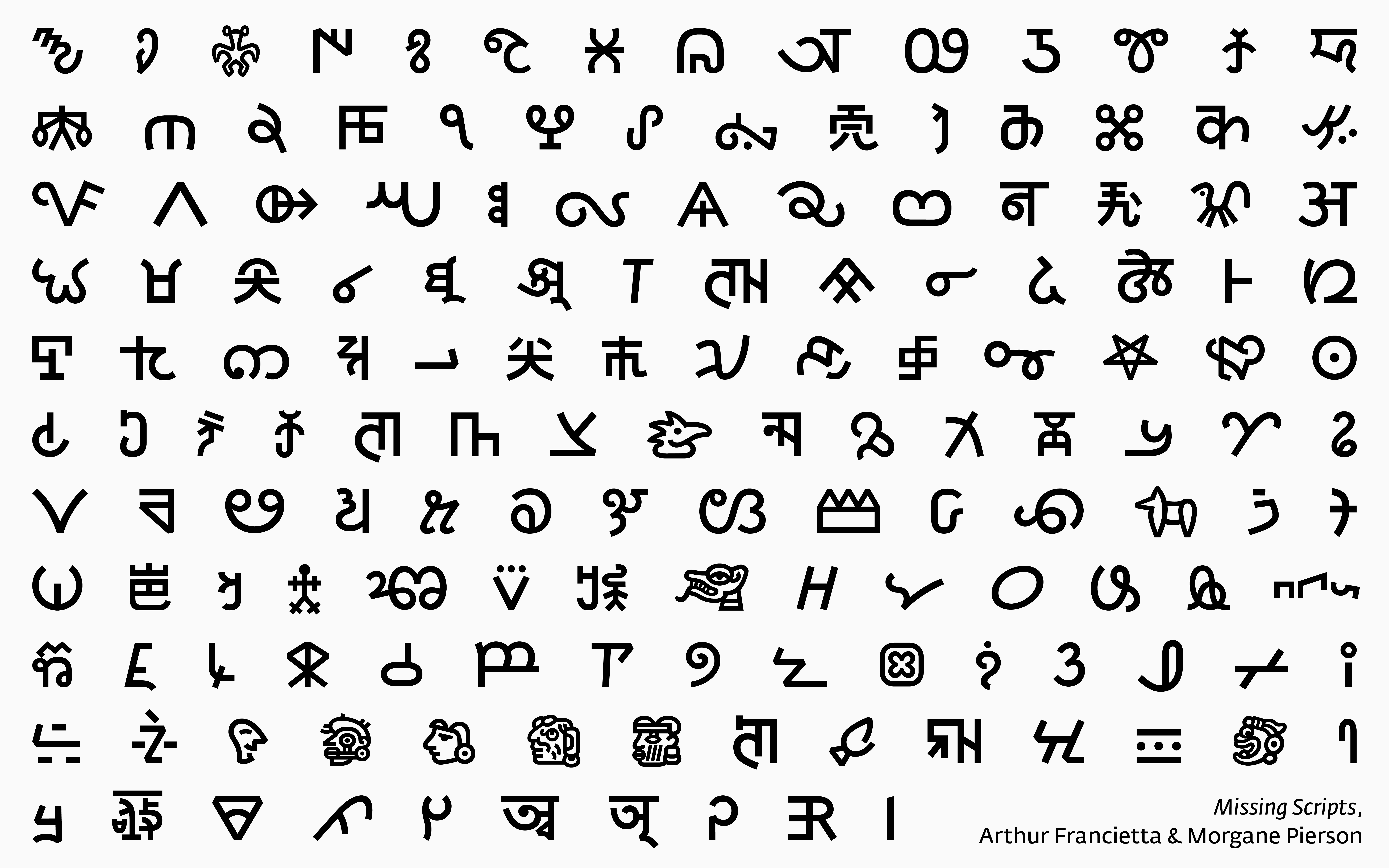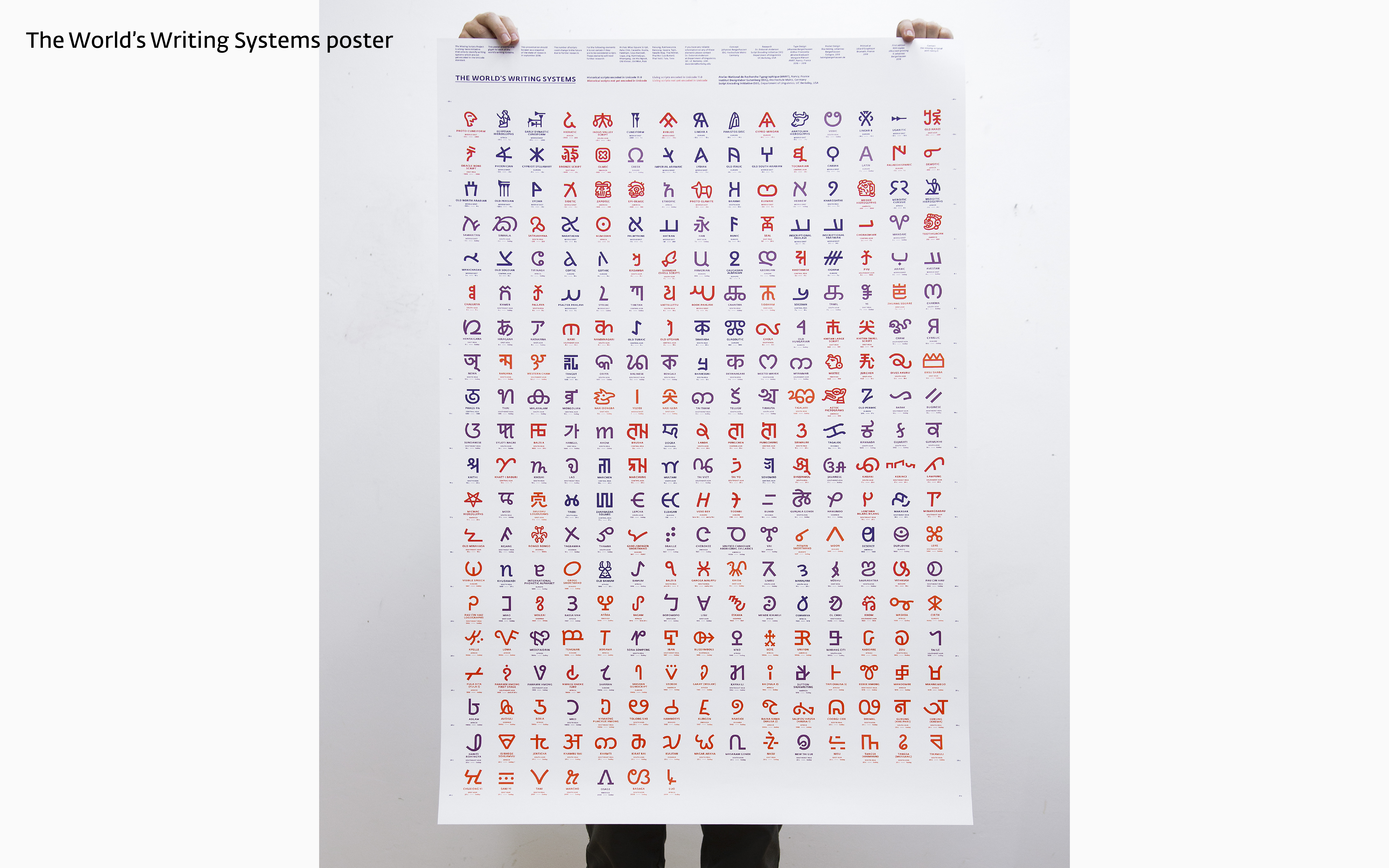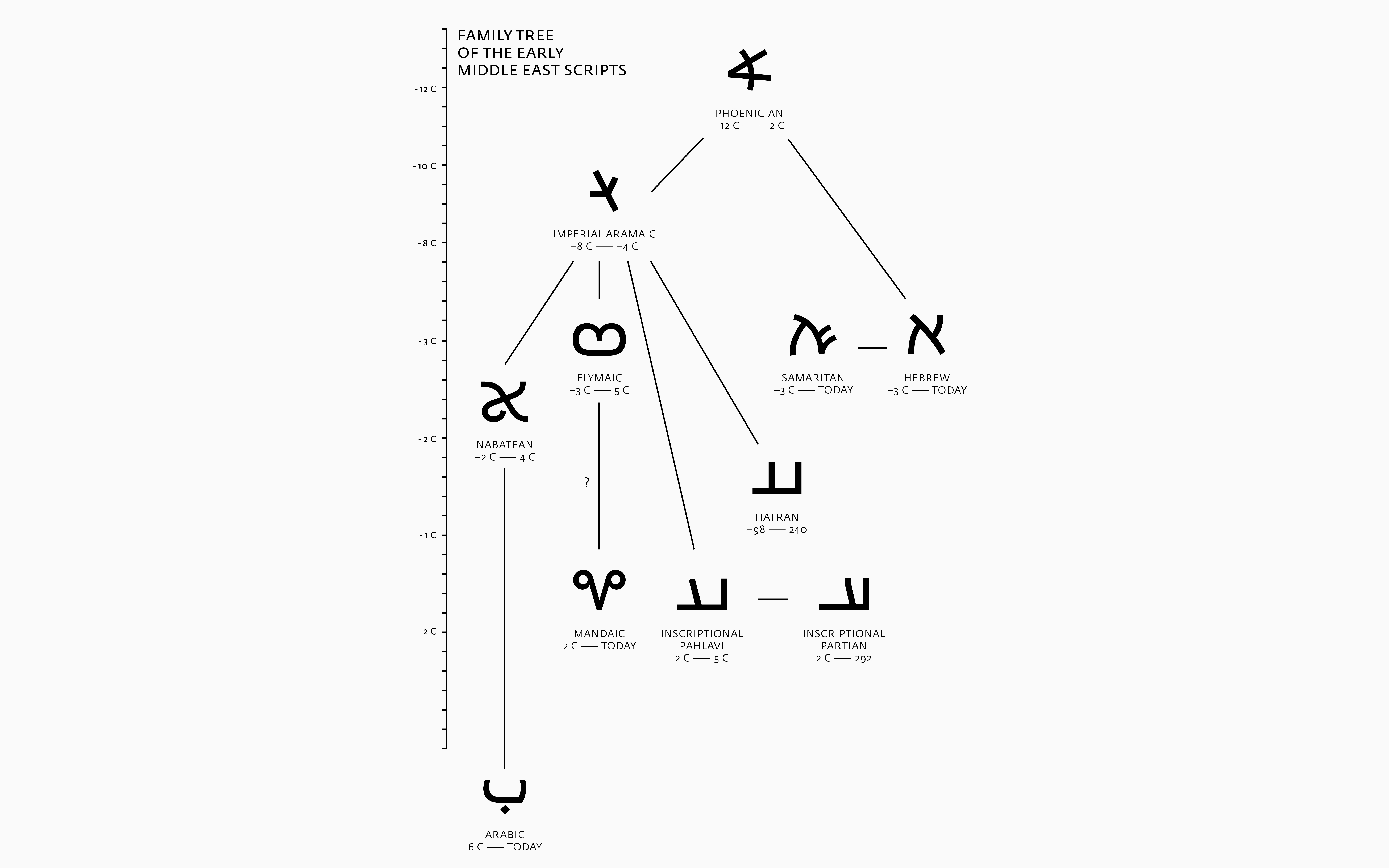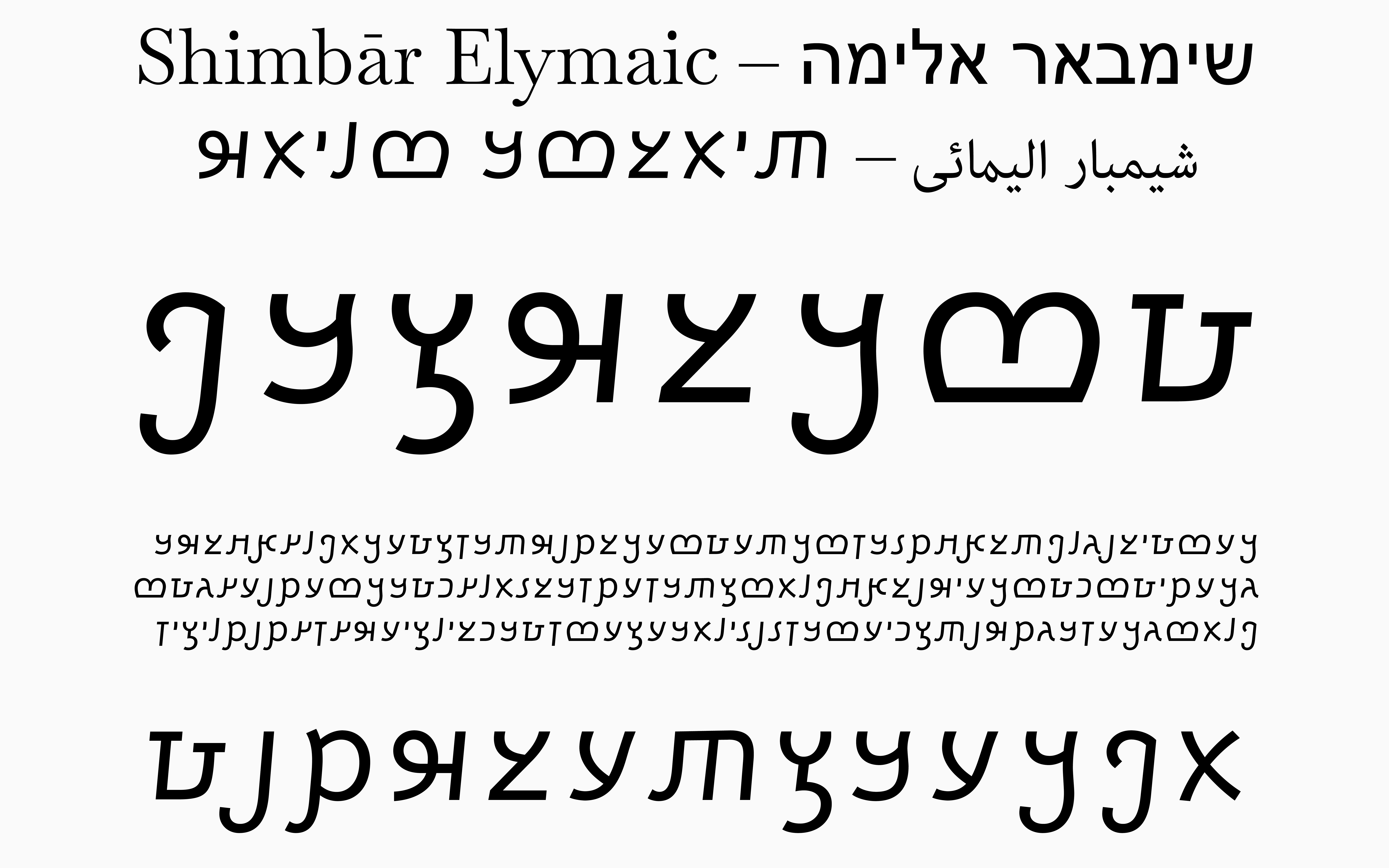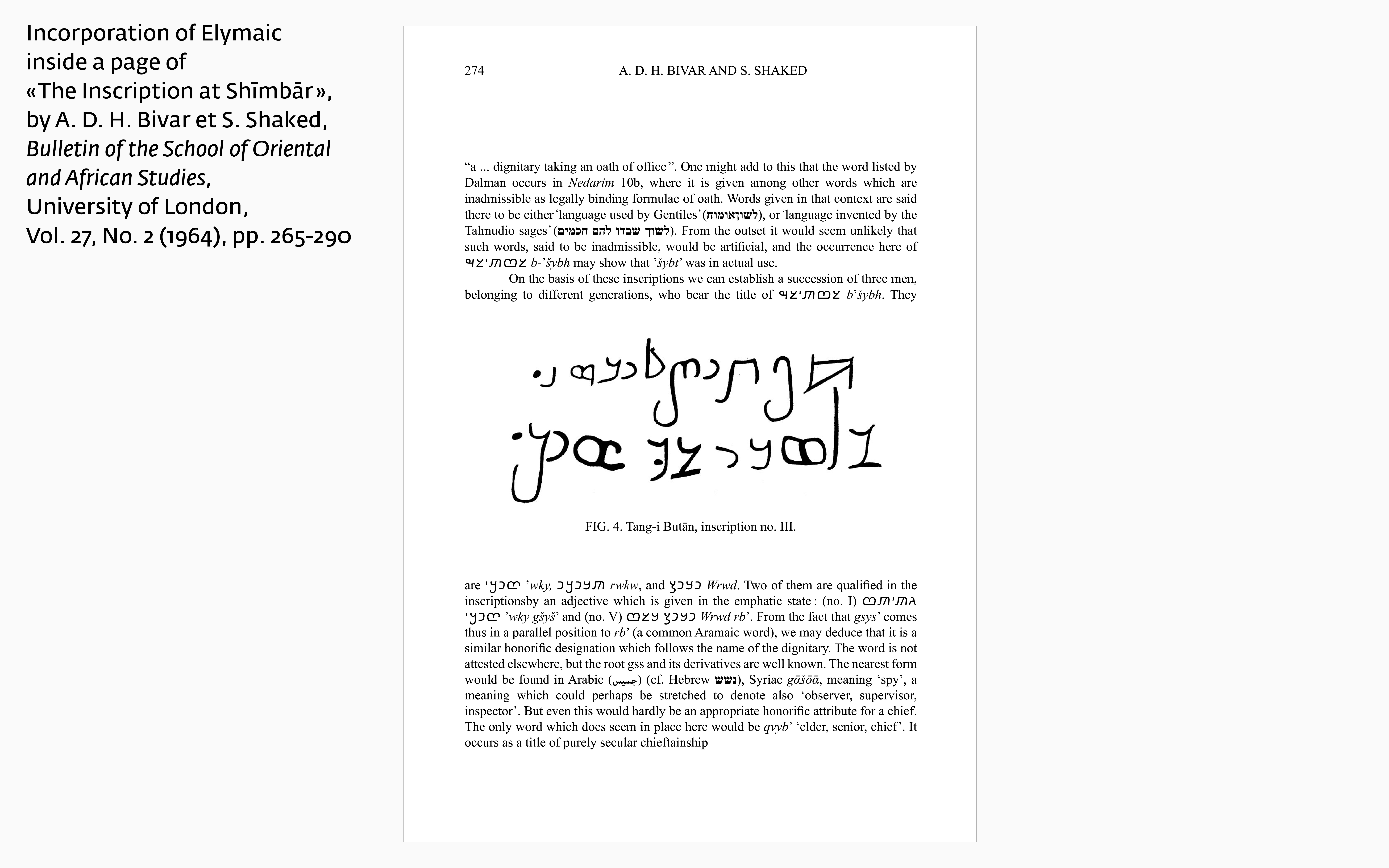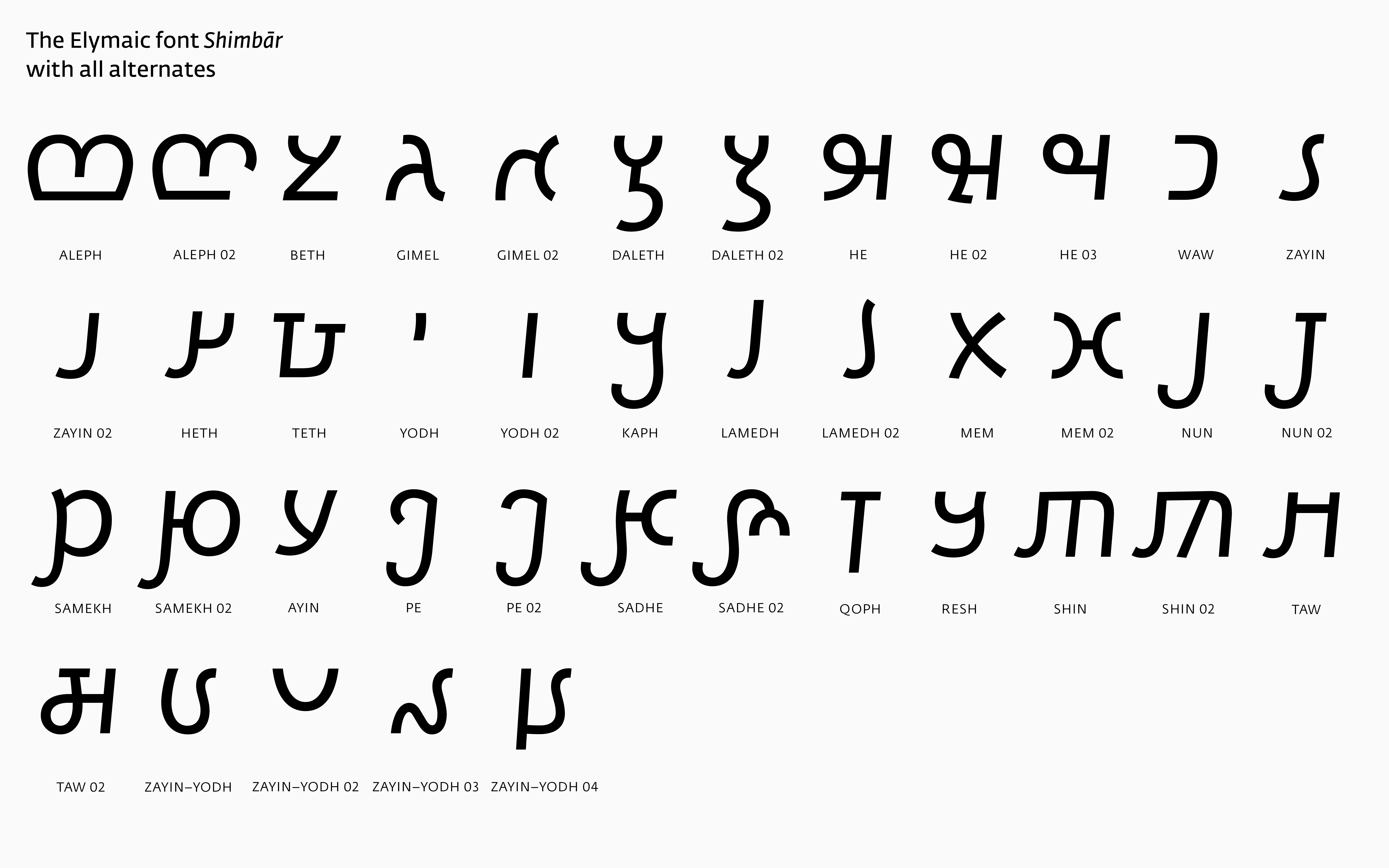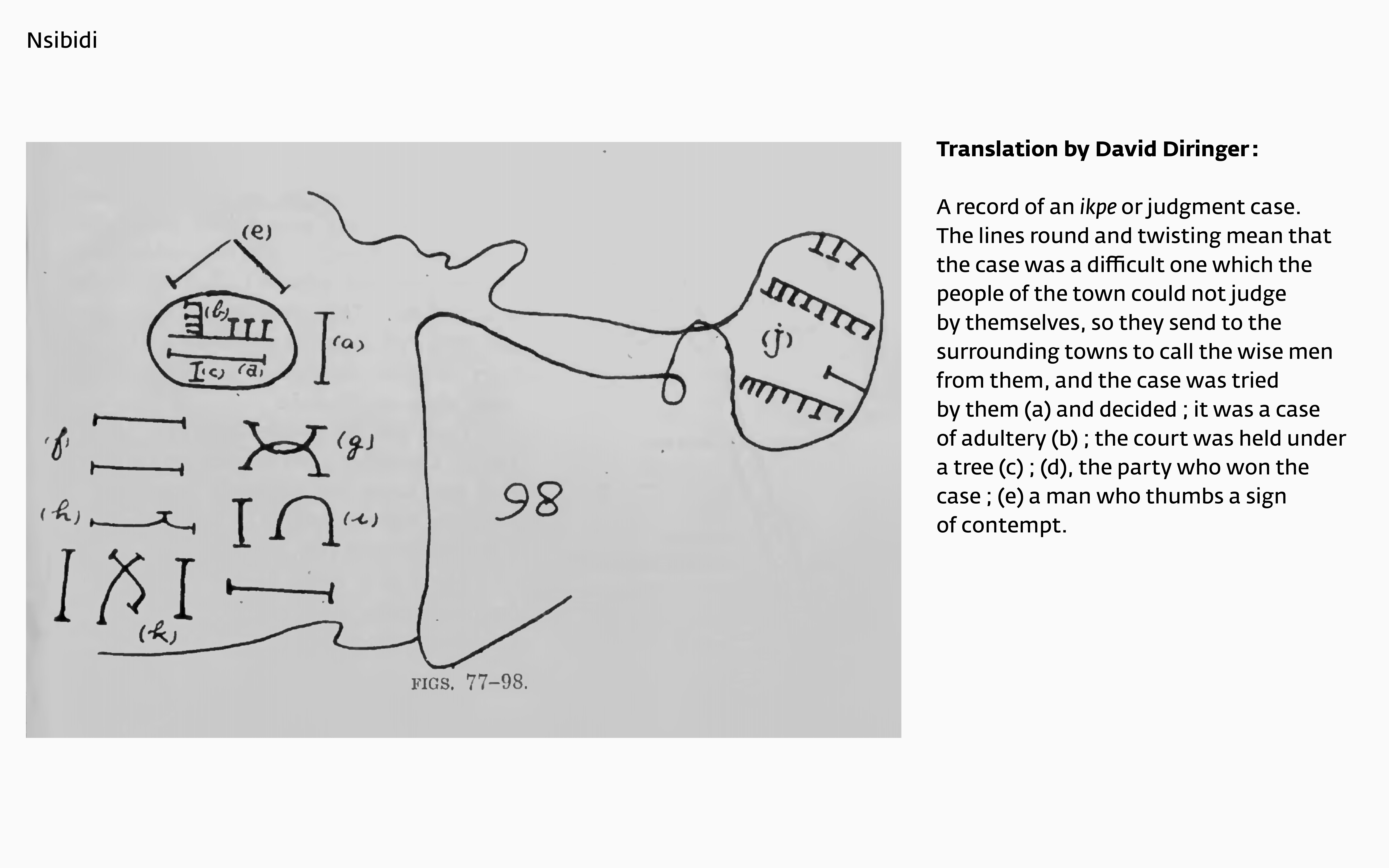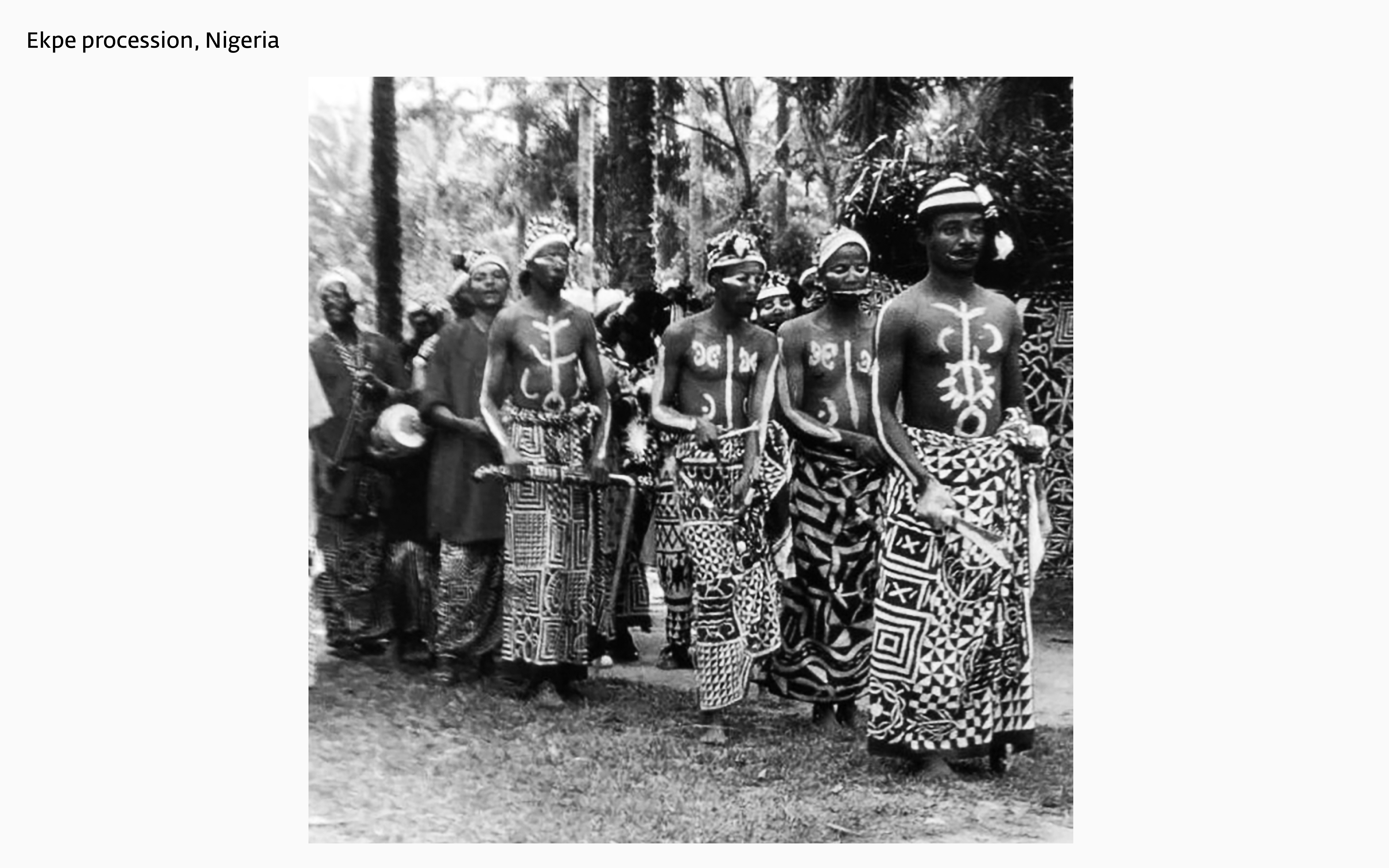The Missing Scripts 2017: Poster, Nsibidi & Elymaic
Morgane Pierson zoomEncoding a writing system is to make it accessible on digital tools, but also a way to preserve it. It also provides the communities to access their own written heritage and the opportunity to seize it. Of the 292 world’s writing systems counted, only half are represented in Unicode 11.0. The multi-annual project The Missing Scripts thus aims to enhance the variety of scripts in the world. And especially, it reflects the extent of minority writings that are not yet incorporated into the Unicode standard. Since its invention in 1991, thousands of characters have been integrated into Unicode and more and more scripts are made available. Updates are getting faster and since Unicode 7.0 in 2014, an average of 5 scripts are added each year. In March 2019, 4 new scripts were added to Unicode 12.0.
Among them, the Elymaic, an ancient script used from the third century BC until the fifth century AD in the south of present-day Iran. Undertaking the digitization process was essential, both for the sake of preservation, but also to fill a need on the part of scientists or communities of users.
The typographic standardization of writing is also a great way of studying societies and the evolution of writing. But some systems, such as Nsibidi, may not have a typographic form. The Nsibidi is a pictographic and ideographic writing system from Southern Nigeria. The Nsibidi – ritual, partly secret, and of great political and social importance – goes far beyond our vision of writing and reading. Therefore, it is probably not destined to be standardized in a coding system as fixed and irrevocable as Unicode – or at least, to our knowledge, not today.
Links:
http://www.worldswritingsystems.org (designed by Johannes Bergerhausen / decodeunicode)
Script Encoding Initiative (UC Berkeley)
